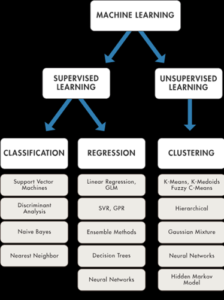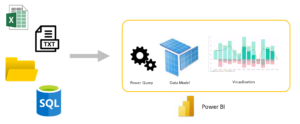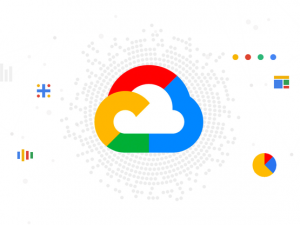Audience
The audience for this course are data professionals and business intelligence professionals who want to learn how to accurately perform data analysis using Power BI. This course is also targeted toward those individuals who develop reports that visualize data from the data platform technologies that exist on both in the cloud and on-premises.
Prerequisites
The audience for this course are data professionals and business intelligence professionals who want to learn how to accurately perform data analysis using Power BI. This course is also targeted toward those individuals who develop reports that visualize data from the data platform technologies that exist on both in the cloud and on-premises.
• Familiarity with JSON and REST programming semantics
To gain C# or Python skills, complete the first steps with C# and Python coding before attending the course. If you are new to artificial intelligence, and want an overview of AI capabilities on Azure, consider completing the AI-900 Azure AI Fundamentals certification before taking this one.
Skills Gained
After completing this course, students will be able to:
• Ingest, clean, and transform data
• Model data for performance and scalability
• Design and create reports for data analysis
• Apply and perform advanced report analytics
• Manage and share report assets
• Create paginated reports in Power BI
Course outline
Module 1: Get Started with Microsoft Data Analytics
This module explores the different roles in the data space, outlines the important roles and responsibilities of a Data Analysts, and then explores the landscape of the Power BI portfolio.
• Data Analytics and Microsoft
• Getting Started with Power BI
Lab : Getting Started
• Getting Started
After completing this module, you will be able to:
• Explore the different roles in data
• Identify the tasks that are performed by a data analyst
• Describe the Power BI landscape of products and services
• Use the Power BI service
Module 2: Prepare Data in Power BI
This module explores identifying and retrieving data from various data sources. You will also learn the options for connectivity and data storage, and understand the difference and performance implications of connecting directly to data vs. importing it.
• Get data from various data sources
• Optimize performance
• Resolve data errors
Lab : Preparing Data in Power BI Desktop
• Prepare Data
After completing this module, you will be able to:
• Identify and retrieve data from different data sources
• Understand the connection methods and their performance implications
• Optimize query performance
• Resolve data import errors
Module 3: Clean, Transform, and Load Data in Power BI
This module teaches you the process of profiling and understanding the condition of the data. They will learn how to identify anomalies, look at the size and shape of their data, and perform the proper data cleaning and transforming steps to prepare the data for loading into the model.
• Data shaping
• Enhance the data structure
• Data Profiling
Lab : Transforming and Loading Data
• Loading Data
After completing this module, students will be able to:
• Apply data shape transformations
• Enhance the structure of the data
• Profile and examine the data
Module 4: Design a Data Model in Power BI
This module teaches the fundamental concepts of designing and developing a data model for proper performance and scalability. This module will also help you understand and tackle many of the common data modeling issues, including relationships, security, and performance.
• Introduction to data modeling
• Working with tables
• Dimensions and Hierarchies
Lab : Data Modeling in Power BI Desktop
• Create Model Relationships
• Configure Tables
• Review the model interface
• Create Quick Measures
Lab : Advanced Data Modeling in Power BI Desktop
• Configure many-to-many relationships
• Enforce row-level security
After completing this module, you will be able to:
• Understand the basics of data modeling
• Define relationships and their cardinality
• Implement Dimensions and Hierarchies
• Create histograms and rankings
Module 5: Create Model Calculations using DAX in Power BI
This module introduces you to the world of DAX and its true power for enhancing a model. You will learn about aggregations and the concepts of Measures, calculated columns and tables, and Time Intelligence functions to solve calculation and data analysis problems.
• Introduction to DAX
• DAX context
• Advanced DAX
Lab : Introduction to DAX in Power BI Desktop
• Create calculated tables
• Create calculated columns
• Create measures
Lab : Advanced DAX in Power BI Desktop
• Use the CALCULATE() function to manipulate filter context
• use Time Intelligence functions
After completing this module, you will be able to:
• Understand DAX
• Use DAX for simple formulas and expressions
• Create calculated tables and measures
• Build simple measures
• Work with Time Intelligence and Key Performance Indicators
Module 6: Optimize Model Performance
In this module you are introduced to steps, processes, concepts, and data modeling best practices necessary to optimize a data model for enterprise-level performance.
• Optimze the model for performance
• Optimize DirectQuery Models
• Create and manage Aggregations
After completing this module, you will be able to:
• Understand the importance of variables
• Enhance the data model
• Optimize the storage model
• Implement aggregations
Module 7: Create Reports
This module introduces you to the fundamental concepts and principles of designing and building a report, including selecting the correct visuals, designing a page layout, and applying basic but critical functionality. The important topic of designing for accessibility is also covered.
• Design a report
• Enhance the report
Lab : Designing a report in Power BI
• Create a live connection in Power BI Desktop
• Design a report
• Configure visual fields adn format properties
Lab : Enhancing Power BI reports with interaction and formatting
• Create and configure Sync Slicers
• Create a drillthrough page
• Apply conditional formatting
• Create and use Bookmarks
After completing this module, you will be able to:
• Design a report page layout
• Select and add effective visualizations
• Add basic report functionality
• Add report navigation and interactions
• Improve report performance
• Design for accessibility
Module 8: Create Dashboards
In this module you will learn how to tell a compelling story through the use of dashboards and the different navigation tools available to provide navigation. You will be introduced to features and functionality and how to enhance dashboards for usability and insights.
• Create a Dashboard
• Real-time Dashboards
• Enhance a Dashboard
Lab : Designing a report in Power BI Desktop – Part 1
• Create a Dashboard
• Pin visuals to a Dashboard
• Configure a Dashboard tile alert
• Use Q&A to create a dashboard tile
After completing this module, students will be able to:
• Create a Dashboard
• Understand real-time Dashboards
• Enhance Dashboard usability
Module 9: Create Paginated Reports in Power BI
This module will teach you about paginated reports, including what they are how they fit into Power BI. You will then learn how to build and publish a report.
• Paginated report overview
• Create Paginated reports
Lab : Creating a Paginated report
• Use Power BI Report Builder
• Design a multi-page report layout
• Define a data source
• Define a dataset
• Create a report parameter
• Export a report to PDF
After completing this module, you will be able to:
• Explain paginated reports
• Create a paginated report
• Create and configure a data source and dataset
• Work with charts and tables
• Publish a report
Module 10: Perform Advanced Analytics
This module helps you apply additional features to enhance the report for analytical insights in the data, equipping you with the steps to use the report for actual data analysis. You will also perform advanced analytics using AI visuals on the report for even deeper and meaningful data insights.
• Advanced Analytics
• Data Insights through AI visuals
Lab : Data Analysis in Power BI Desktop
• Create animated scatter charts
• Use teh visual to forecast values
• Work with Decomposition Tree visual
• Work with the Key Influencers visual
After completing this module, you will be able to:
• Explore statistical summary
• Use the Analyze feature
• Identify outliers in data
• Conduct time-series analysis
• Use the AI visuals
• Use the Advanced Analytics custom visual
Module 11: Create and Manage Workspaces
This module will introduce you to Workspaces, including how to create and manage them. You will also learn how to share content, including reports and dashboards, and then learn how to distribute an App.
• Creating Workspaces
• Sharing and Managing Assets
Lab : Publishing and Sharing Power BI Content
• Map security principals to dataset roles
• Share a dashboard
• Publish an App
After completing this module, you will be able to:
• Create and manage a workspace
• Understand workspace collaboration
• Monitor workspace usage and performance
• Distribute an App
Module 12: Manage Datasets in Power BI
In this module you will learn the concepts of managing Power BI assets, including datasets and workspaces. You will also publish datasets to the Power BI service, then refresh and secure them.
• Parameters
• Datasets
After completing this module, you will be able to:
• Create and work with parameters
• Manage datasets
• Configure dataset refresh
• Troubleshoot gateway connectivity
Module 13: Row-level security
This module teaches you the steps for implementing and configuring security in Power BI to secure Power BI assets.
• Security in Power BI
After completing this module, you will be able to:
• Understand the aspects of Power BI security
• Configure row-level security roles and group memberships
Schedule
Our minimum class-size is 3 for this course. Currently, there are no scheduled dates for this course but it can be customized to suit the time schedule and skill needs of clients and may be held online or at our site or your premises.
Click on the following link below to arrange for a custom course: Enquire about a course date
FAQs
CERTFICATE OF COMPLETION: Participants will receive a certificate of completion at the end of a course. This is not an official certification for the product and/or software. Our courses do indicate the appropriate certification exam(s) that the participant can sit. Data Vision Systems does not provide certification or deliver the certification exams. Participants are responsible for arranging and paying for the certification exams on the appropriate certification body.
CANCELLATION POLICY: There is never a fee for cancelling seven business days before a class for any reason. Data Vision Systems reserves the right to cancel any course due to insufficient registration or other extenuating circumstances. Participants will be advised prior to doing so.











Reviews
There are no reviews yet.